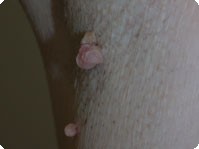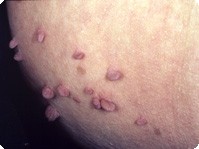Skin Tags
Skin tags (Acrochordon) are very common and found in about 25% of the population. They usually start at any time from 20 years of age onwards and gradually become more common. The skin tags start as tiny brown or skin coloured lesions which gradually increase in size and may become attached to a stalk than can be up to 1 cm in length.
The most commonly affected areas are the armpits, neck and groin regions.
The lesions themselves are harmless, though patients find them very unsightly and may often catch on clothing and jewellery causing them to bleed.
Skin tags can be removed using diathermy. During diathermy an electrical current passes through a tiny needle causing it to heat up this can then be used to cut and remove the skin tags. Small tags usually require no anaesthetic as removal is virtually painless, larger tags will sometimes need administration of local anaesthetic, which then means the treatment with the diathermy will be painless.
After the treatment there is normally some redness where the treatment was performed and then a scab will form at the site. When the scab goes, there is usually a tiny area of the skin, which is slightly redder in colour – this gradually fades towards a normal skin colour over the following months.
Usually the treatment is permanent; however, it will not stop other new lesions developing in other areas.
After the treatment there are no restrictions on driving or returning to work etc.
Click here to see our frequently ask questions about this treatment
Examples of Skin Tags
 |

|
FAQ
- Does it hurt?
- Are there any side effects?
- Can I return to work afterwards?
- Is the treatment permanent?
Usually with small lesions it is virtually painless, for larger lesions we can use local anaesthetic.
After the treatment there is normally some redness where the treatment was performed and then a scab will form at the site. When the scab goes, there is usually a tiny area of the skin, which is slightly redder in colour – this gradually fades towards a normal skin colour over the following months.
Can I Return To Work Afterwards?
Yes. There are no restrictions on driving or returning to work after treatment.
Usually the treatment is permanent; however, it will not stop other new lesions developing in other areas.
Photo Disclaimer
Please note that the photos on this website are for illustration purposes only; some have been supplied by the various manufacturers and not all have been taken in this clinic.